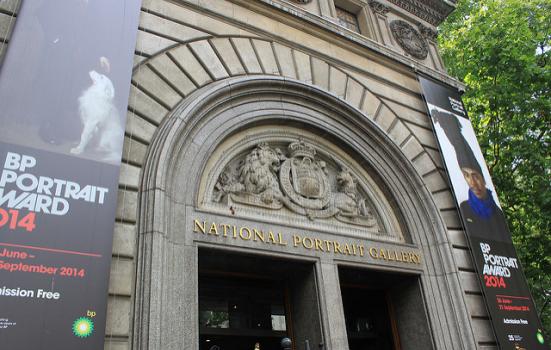The 800k drop reported between 2017 and 2018 was due to errors in technology installed by research company Ipsos Retail Performance, which also provides services for other cultural organisations in the UK.

Andy Hay (CC BY 2.0)
Faulty counting equipment, which was not monitored properly by an external contractor, was behind a dramatic fall in visitor figures at London's National Portrait Gallery.
The data reported to the Government showed a 43% fall in visits between 2016/17 and 2017/18, from 1.9 million to 1.1 million. Initial figures suggested that visits were also down by 28% in the first three months of 2018/19, compared with the same period last year.
But a revised analysis shows that the true figure for 2017/18 was 1.7 million – a fall of just 10%.
Concerns
Ipsos Retail Performance’s system counts the number of visitors to walk through the Portrait Gallery’s main entrance. Staff raised concerns last month about its accuracy after discovering discrepancies between the visitor figures recorded at the main entrance and separately at the BP Portrait Award 2018 exhibition.
An investigation by IRP – with which the Gallery has been working for 17 years – revealed a fault with the counting system at the main entrance, dating back to April 2017. Although the system was repaired, it subsequently failed an accuracy audit in July 2017 when manual counts were compared with system counts.
Human error led to the incident being recorded as a pass, rather than a fail, leading to “no further action” from IRP– and incorrect assurances that the system was in good health in response to the Gallery's most recent queries.
When asked whether the gallery would continue to work with IRP, a spokesperson said they had “replaced the counting system over the main entrance at no cost to the Gallery and worked with the Gallery to calculate the adjusted figure.”
IRP works with a number of other cultural institutions in the UK. When asked how it was sure the same issue could not take place in the other locations, a spokesperson said the company holds the reliability and validity of its data “in the highest regard”.
“Ipsos Retail Performance has, and always will be transparent with its figures, and can provide assurance that an audit has been completed for all other public spaces that it provides visitor counting solutions for.
“As a result, Ipsos Retail Performance is confident that the miscount at the National Portrait Gallery was an isolated incident.”
Trends
The Gallery has now released a monthly breakdown of visitor figures from April 2017 to June 2018.
Reflecting on reasons for the overall decline, the National Portrait Gallery told AP the adjusted figures now place the institution in line with other museums and galleries in London. “There is no single factor behind the decrease in overall visitor numbers,” they said, adding the Gallery has been working with neighbours and other museums and galleries in London on research and initiatives to encourage additional visitors.
This is consistent with reports from other sources. Research by Visit England found visits to museums and art galleries fell last year for the second year in a row, dropping by 1% each year. It says this was “largely driven by those based in London, who saw a 4% drop in visitor numbers in 2017”.




